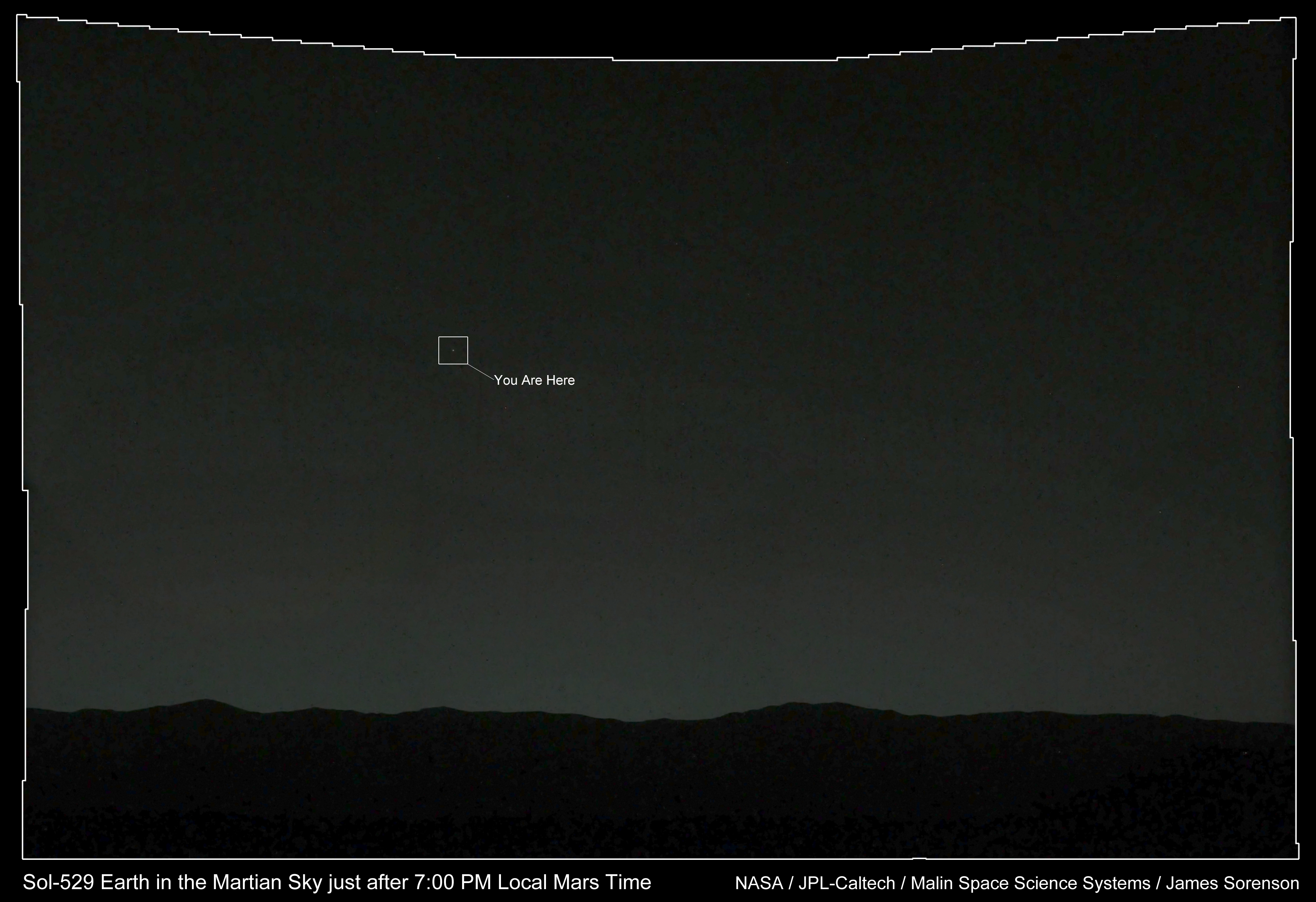http://www.independent.co.uk/news/science/here-is-what-earth-looks-like-from-mars-9115368.html
Really large image inside.

Really large image inside.




Kerbal Space Program gives us a good idea of just how huge everything is, and how crazy it is when your little kerbonauts are in their interplanetary ship on their way to Jool (a green analog to Jupiter and its moons) and all you can see are "stars". And one of those stars is their home and the other their destination. Yet all they see during that long voyage is a vast empty darkness with the sun (Kerbol) and the dots that represents planets, and further away, stars. stuck in a small cabin with just a few other fellow kerbals. The only sign of civilization, or even life, for several AUs! Just arriving to their destination will be a relief, as they will finally have something to watch in awe, explore and discover.
But for now... so lonely...

Quite much bigger actually. Distance doesn't change and Earth diameter is about 3 & 2/3 times that of the Moon.Earth from the moon looks nearly the same size as the Moon does from Earth.
Communications: Curiosity is equipped with significant telecommunication redundancy by several means – an X band transmitter and receiver that can communicate directly with Earth, and a UHF Electra-Lite software-defined radio for communicating with Mars orbiters.[29] Communication with orbiters is expected to be the main path for data return to Earth, since the orbiters have both more power and larger antennas than the lander allowing for faster transmission speeds.[29] Telecommunication includes a small deep space transponder on the descent stage and a solid-state power amplifier on the rover for X band. The rover also has two UHF radios,[29] the signals of which the 2001 Mars Odyssey satellite is capable of relaying back to Earth. An average of 14 minutes, 6 seconds will be required for signals to travel between Earth and Mars.[39] Curiosity can communicate with Earth directly at speeds up to 32 kbit/s, but the bulk of the data transfer should be relayed through the Mars Reconnaissance Orbiter and Odyssey orbiter. Data transfer speeds between Curiosity and each orbiter may reach 2 Mbit/s and 256 kbit/s, respectively, but each orbiter is only able to communicate with Curiosity for about eight minutes per day.[40] Communication from and to Curiosity relies on internationally-agreed space data communications protocols as defined by the Consultative Committee for Space Data Systems.[41]
JPL is the central data distribution hub where selected data products are provided to remote science operations sites as needed. JPL is also the central hub for the uplink process, though participants are distributed at their respective home institutions.[29] At landing, telemetry was monitored by three orbiters, depending on their dynamic location: the 2001 Mars Odyssey, Mars Reconnaissance Orbiter and ESA's Mars Express satellite.[42]
Did anyone watch the Horizon program Man on Mars: Mission to the Red Planet?
Fascinating the amount of barriers they have to overcome to succeed.
Really hope it happens in our/my lifetime.
And some people say they aren't bothered about planetary landing...
